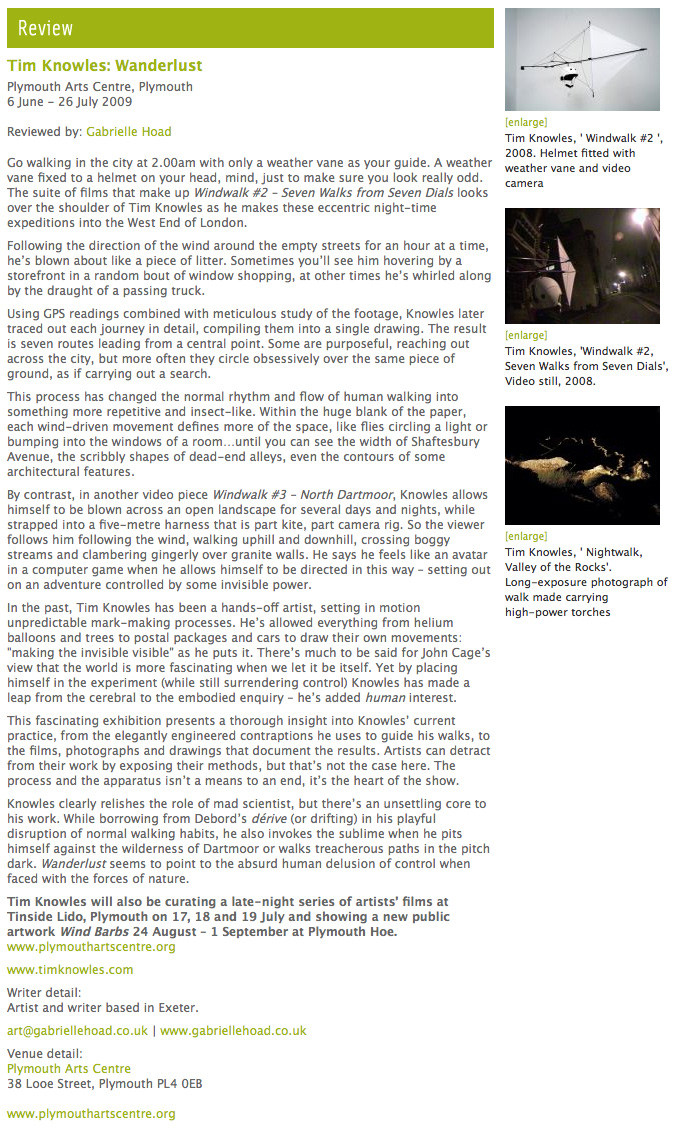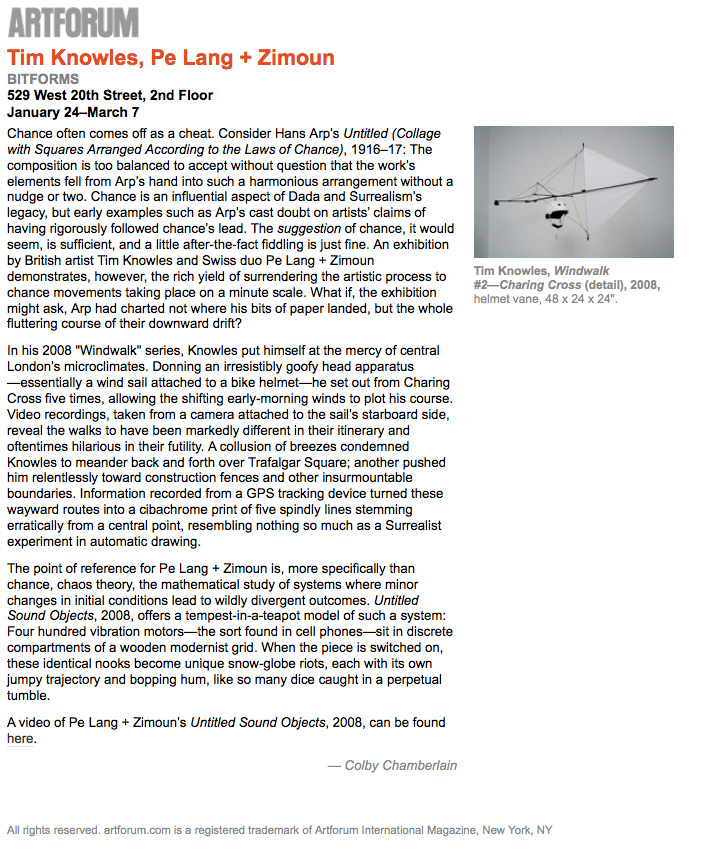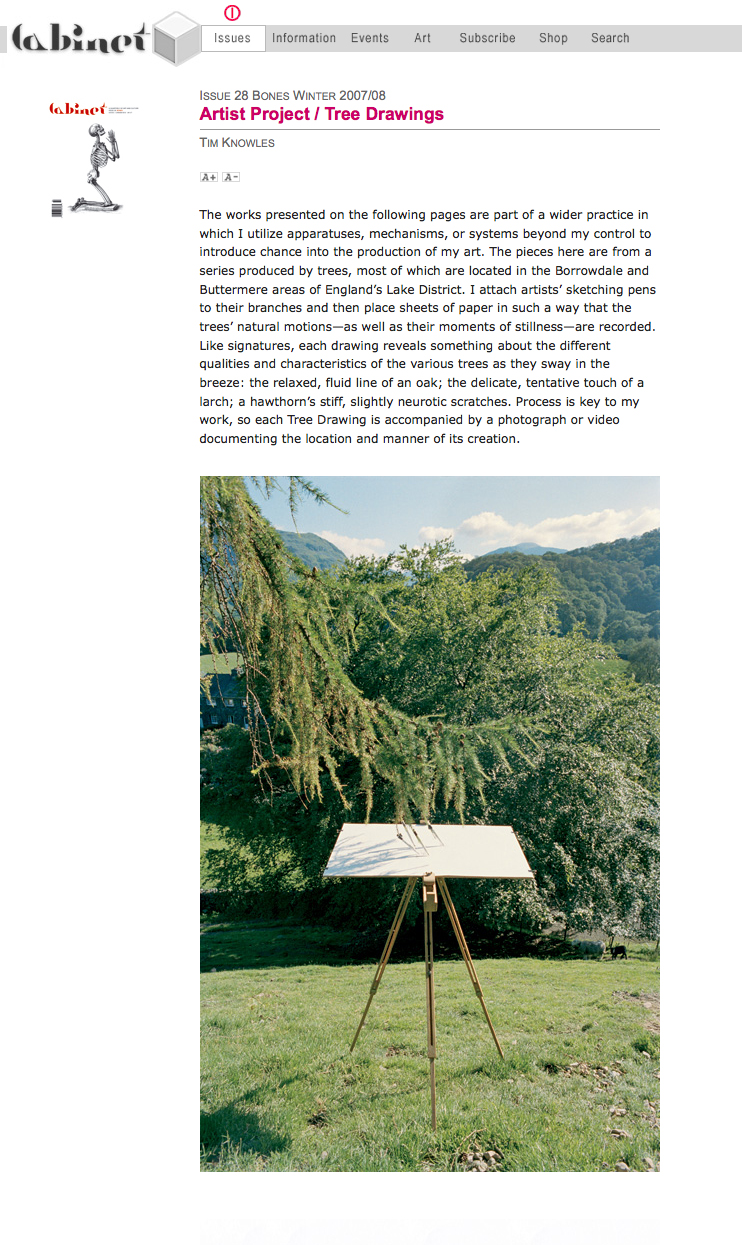Too many joint shows rest on a flimsy curatorial premise, yoking together artists with little sympathy for - or often even acquaintance with - each other's work and drawing tenuous parallels between them. Rather than the desire to reveal correspondences (conscious or otherwise) in like-minded practices, such endeavours are usually driven by logistical or pecuniary necessity, with galleries match-making artists in the manner of a dating agency, taking into account only the most superficial of similarities in the process.
In avoiding these hazards with their current coupling of Tim Knowles and Catherine Morland, fledgling gallery Rokeby has reached a curatorial coming-of-age. Considered together, Knowles and Morland's work conducts an enquiry into the more arcane or mystic aspects of the drawing process; through different methods, they test the influence of external physical and metaphysical forces - smoke and wind, chance and memory - on the graphic mark. Seeking to dissolve the purposeful and delimitative line of traditional draughtsmanship, they instead explore its more accidental and impermanent manifestations: the chance scribble made by a pen strapped to a branch as it bobs in the breeze (Knowles), the fugitive sepia configurations made by smoke on glass (Morland). Rokeby's sensitive hang of the artists' works allows affinities and discordances to emerge between the two organically, shaping a perceptive study of the instability and unpredictability of an age-old medium.
In an ongoing series, Tim Knowles attaches pens to the tips of branches of trees in various settings and allows the chance movement of the wind to dictate a composition. The resulting 'tree drawings' resemble spidery tumbleweeds that skitter across the paper, their scratchy lines and abstract blotting parodying the drawings of Jackson Pollock. Like Pollock, Knowles is more interested in process than form; but rather than process servicing the heroic figure of the artist (as it did with Pollock), Knowles uses it to relinquish authorial control, to release drawing from its enslavement to the artist's hand. Through inventive, often playful techniques that recall the Surrealist experiments of Joan Miro, he introduces arbitrary and aleatory elements into the work's creation. His intention is to make visible the trajectories of primordial and modern forces, whether the laws of physics at work within a car as it races around the Brands Hatch Circuit, or the path of a full moon's reflection on unstill water.
In Tree Drawing - Scots Pine, Buttermere Shore #1 (2005), wispy articulations form an indexical trace of the movement made by the droopy limb of a scots pine in Cumbria as it drifts aimlessly over a piece of paper. Like most of Knowles's pieces, the final work is presented as a diptych in which the drawing is placed alongside a c-type print depicting the elaborate arboreal apparatus that made the mark. Given its Cumbrian context, the unforced lyricism of Knowles's approach stands in ironic historical juxtaposition to the plein-air labours of English landscape painters, who for centuries have strived to capture the agitation of a swaying tree. Knowles achieves their long-held ambition by the simple fact of enabling the tree to record its own unrest.
Knowles's interest in the capriciousness of chance is complemented by Morland's fascination with the instability of vision and the vagaries of perception. Manipulating smoke, light and water on glass, she pictures modern figures reclining in park-like settings, their sooty silhouettes delineated from bleached-out grass as in a faded negative. Some of the scenes are overlaid within Perspex boxes and given a psychedelic tint; in others the sense of nostalgia is conveyed through the projection of flickering light, leaving after-images on the wall like half-recalled memories. Fashioned from smoke and shadows, these fragile and temporal images refer to optical innovations of the nineteenth century such as the pin-hole camera and Victorian illusionism.
The oneiric quality of Morland's smoke drawings - their smudged focus and sketchy lines - is effected through a highly experimental draughtsmanship. A perverse chiaroscuro in parts evokes a solidity of form, and elsewhere, dissolves it; likewise, a density of smoke is sometimes used to suggest perspective but also to collapse it. Like Knowles, Morland pushes the boundaries of drawing as a process and a medium, destabilising its authoritative line, exposing its illusory character and investigating its manifold possibilities. Nina Miall
Nina Miall is a freelance writer and art historian. She ran the Public
Programme at the Royal Academy of Arts in London for several years
before leaving to undertake a Masters in contemporary art at the
Courtauld Institute. She currently contributes criticism to a number of
international art magazines and websites.
Tim Knowles and Catherine Morland
Until 1 August
Rokeby Gallery
37 Store Street
London WC1E 7QF
Tel: +44 (0) 20 7168 9942
Email: rokeby@rokebygallery.com






